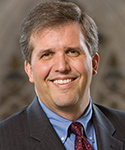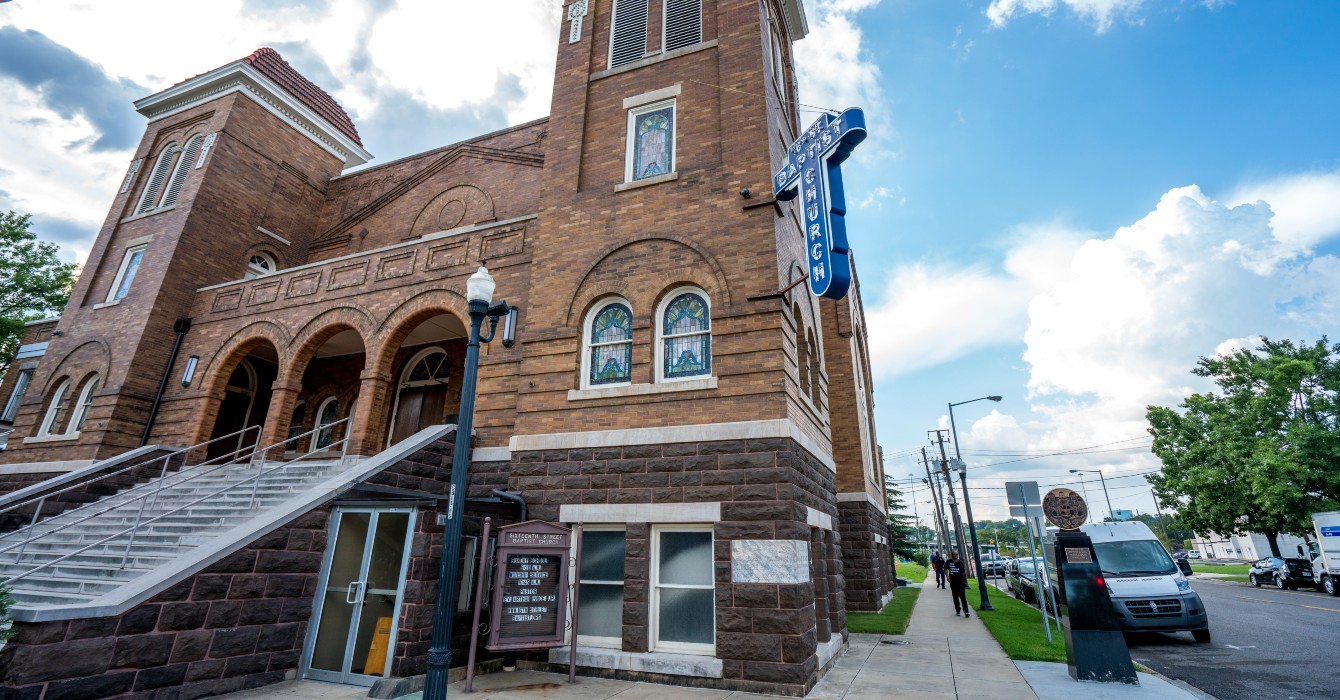We often associate growth with adjectives like thriving, transformative, generative and sustainable. If we want Christian institutions and Christian communities to be signs of God’s reign, surely they will be marked by consistent growth, won’t they?
Memphis’ Methodist Le Bonheur Healthcare faced this question a decade ago. Gary Shorb, the system’s CEO, decided the answer was “no.” To become more mission-driven as a church-related health system, Shorb’s institution needed to decide what to stop doing and reallocate its resources.
This reallocation of resources was based on discerning the “soul” of the organization -- the heart of its mission -- and clearly identifying the needs of its primary constituents and community. Health system leaders decided to sell assets, including some rural hospitals.
Methodist Le Bonheur did not simply end relationships or cut programs that were no longer effective. It also sold assets and ended programs that were themselves worthwhile but that, after careful evaluation, were determined to be no longer at the center of its work. As Shorb put it, “Sometimes you have to shrink to grow.”
The missional focus, in turn, became education, children’s hospitals and the development of the system’s Congregational Health Network. The innovative Congregational Health Network has helped establish relationships throughout the greater Memphis community to connect, as Methodist Le Bonheur Senior Vice President Gary Gunderson puts it, the “healing institutions” of Methodist Le Bonheur with the “health institutions” of local congregations.
The Congregational Health Network has helped Methodist Le Bonheur become a more generative organization, because it has enhanced the networks connecting people throughout Memphis with networks of services from midwives to hospice. It has also enabled a more proactive and holistic focus on health throughout the community.
Retired Army Lt. Gen. James Dubik, now a consultant for and board member of the National Leadership Roundtable on Church Management, advises institutional leaders to evaluate carefully what shouldn’t change before deciding what can change.
Dubik has considerable experience guiding change -- he helped lead the Army through one of the most sweeping transitions in U.S. military history. In that process, before he was ready to advise what ought to change, Dubik had to describe the “soul,” or essence, of the Army. That soul shouldn’t change. Everything else, he says, is up for grabs.
Mission-driven Christian institutions are generative and sustainable because they can name and focus on their telos, their soul. With that clear sense of purpose, institutional leaders can more wisely decide what needs to be pruned and what needs to grow to enhance the institution’s generativity and sustainability.
But many institutional leaders leap too quickly at chances for unchecked growth in size and programs. And, indeed, there are moments when growth is needed, such as in the effort to create scalable results or during an institution’s early years.
Who would not have wanted to contribute to the growth of Muhammad Yunus’ Grameen Bank, or the spread of church-related higher education in the U.S. in the 19th century, or the multiplication of local affiliates of Habitat for Humanity?
The amazing fruitfulness of such organizations, elegant in their design and sustainable over time, has contributed to significant development of human, intellectual, network, service and financial capital. Their flourishing has also contributed to the emergence and cultivation of local, regional and broader ecosystems.
Yet Methodist Le Bonheur’s experience also points to the critical importance of pruning.
In John’s Gospel (15:1-2), Jesus evokes the image of pruning for Christian life, and this practice is crucial for organizations as well. Pruning involves getting rid of those things that are broken, are sinful, have died or no longer advance an institution’s mission. Jesus talks about the wheat that in falling to the ground eventually bears much fruit (John 12:24).
Too many individual organizations cling desperately to a life that has already run its course, when they might be able to be re-purposed for new life in the broader ecosystem. Leaders of large institutions such as Methodist Le Bonheur have to attend to their whole ecosystem as well as the organizations within their institution.
Jesus’ image of pruning also suggests that we may need to remove some things that are otherwise healthy for the sake of even greater faithfulness and effectiveness. Healthy rosebushes need to be pruned for the sake of even greater growth, beauty and creativity. So also with institutions.
In 2000 the Mormon church decided to transform its thriving junior college in Idaho, Ricks College, into a four-year baccalaureate institution, to be called BYU-Idaho. As Clayton M. Christensen and Henry J. Eyring narrate the story in their recent book, “The Innovative University,” church president Gordon Hinckley was convinced that the church needed to offer young church members more opportunities for higher education. The conversion of Ricks College seemed to be a better and more cost-effective strategy than creating a brand-new institution.
Hinckley faced a series of tough choices -- reviewing and reducing the number of disciplines, majors and courses; converting the campus to a year-round curriculum; and, notably, eliminating an enormously successful intercollegiate athletics program.
The pruning was born from a clear sense of mission: Hinckley believed that the Mormon church needed to be more intentional about overinvesting in young people, and some costs, such as athletics, detracted from providing a high-quality education.
BYU-Idaho has developed over the past decade as an innovative model for higher education, providing higher quality education at a lower cost per student than Ricks College had previously been able to do. It is offering baccalaureate rather than associate-level degrees, and making them available to significantly more young church members than the Mormon church had previously been able to serve.
But none of these initiatives would have been possible if Hinckley hadn’t insisted on pruning as an integral part of his vision of sustainable design.
It takes significant leadership to recognize the importance of pruning for the sake of future growth, beauty and creativity. It is challenging to prune even a single rosebush, a small department within an organization or an organization within a larger institutional ecosystem. It is even more challenging to prune long-established, larger institutional ecosystems like Methodist Le Bonheur Healthcare or Ricks College.
The commitment to pruning gives a large institution the right issues on which to focus, but it is also crucial to have the right people to work on them.
Christensen’s research on “disruptive innovation” has shown that for innovation to be implemented in established institutions, a critical tool is a “heavyweight team” led by someone with “substantial organizational authority” and made up of “experts who represent all of the necessary organizational functions and can speak for their departments without feeling beholden to them” (“The Innovative University”).
Both Methodist Le Bonheur and BYU-Idaho developed such teams for implementation, and have ensured that they maintain senior-level leadership focused on integration and fulfillment of the institutional mission.
For example, Gary Gunderson was a senior leader directing the Interfaith Health Program at the Carter Center who was recruited to become senior vice president for health and welfare ministries at Methodist Le Bonheur. He was key to the development of the Congregational Health Network. Kim Clark was dean of Harvard Business School -- and a widely respected leader in higher education and innovation -- who was recruited to become president of BYU-Idaho.
Both have helped to maintain a focus on the institution’s soul amidst dynamic innovation, enabling pruning and growing to occur together. In so doing, they have allowed capacities such as generative organization and sustainable design to be established integrally, as a part of the DNA of the institution, and not dependent solely on the vision of a particular leader or board.
Dubik describes the same process in his assignment as head of transformation of the Army.
He was a two-star general appointed by his superiors to lead a change process, and was essentially “walled off” and protected to be able to work on those processes. The Army created a “heavyweight team” with senior-level leadership to discern what needed to be pruned and what needed to be fed so the institution could work on the right problems for its adaptive challenges.
In each case, the heavyweight team focused on the design and implementation of the innovation within the organization. The executive leadership needed to oversee the heavyweight team and simultaneously pay attention to the larger institutional ecosystem.
In addition to seniority and credibility, the heavyweights must be people of great character and courage. It takes courage to hold together the dynamics of traditioned innovation, identifying honestly and clearly the soul that should not be changed, as well as those components in need of pruning. And it takes courage to follow through and act on the conclusions that have been drawn.
That is why courage is so closely linked to both truthfulness in discernment and perseverance in execution.
The heavyweights must also be people of humility. They need to have a deep appreciation for the soul of the institution, the tradition that has given life to all that has gone before, even as they undertake the challenge of pruning for the sake of future growth, beauty and creativity.
This humility is a reminder that each Christian institution bears witness to the reign of God, but in its own partial way; it can never, and ought never, aspire to do it all. Such personal and institutional humility invites the networks of relationships, personal and institutional, that are so critical to generativity and sustainability, and that are marks of, and contributors to, the trait of interpretive charity.
Sustainable design requires that we remain focused on the telos of our Christian institutions, the mission that brought them into being and gave them life. The more clearly we discern the end, the more effective will be our focus on pruning and growing faithfully, and the more faithful will be our development of those traits that are important for discerning when to prune and when to grow, in service to God.













